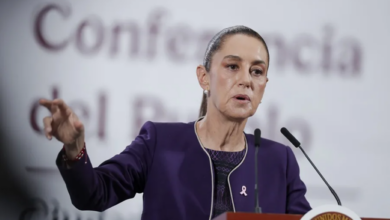Human Capital Flight: another problem for Latin America
The lack of job opportunities for overqualified people in countries that do not contribute to science or research leads to a problem called Human Capital Flight

Men walking through an airport departure zone / Reference image /Pixabay
LatinAmerican Post | Laura Viviana Guevara Muñoz
Listen to this article
People who have dared to complain about the place where they live have probably heard the phrase, "if you do not like it, why do not you leave?" While some people are left thinking about the reasons why they do not, others take that advice and decide to leave. It is called "Human Capital Flight" to the phenomenon in which those citizens, who are educated, intelligent or even entrepreneurs, decide to leave.
Leer en español: Fuga de cerebros: otro problema para América Latina
The term has been used more or less since the 1960s and represents the fact that those professionals who have been trained in their country of origin migrate to others to find a better job or salary opportunities. Also, one of the main characteristics of this phenomenon is that the people who migrate come from developing countries and their destiny is to reach developed countries.
Latin America is not exempt from this phenomenon because countries such as Colombia and Mexico have the most Capital Human Flight. El Mundo said, "this phenomenon reveals the difficulty that countries have in capturing and caring for talented professionals with high-level studies". According to data from the Organization for Economic Cooperation and Development (OECD), the number of Latin Americans who had a university degree and who left their country of origin grew by 155% between 1990 and 2007.
In this way, countries with a better development index are attractive and as a consequence thousands of trained people "contribute to the generation of ideas and the subsequent application of these, creating an endless number of innovative mechanisms that help contribute to the economy of that country", according to Revista Supuestos.
You may be interested in reading: Venezuelan migrants take arepas to new lands amid crisis
Where do they migrate?
As mentioned earlier, Mexico leads the Human Capital Flight within Latin America, with 866 thousand people; followed by Colombia with 346 thousand people; then Cuba with 345 thousand people; then Jamaica, Brazil, Peru, Argentina, and Venezuela are found, according to the official figures presented by the OECD. In this way, according to the same organization, the countries listed as favorites for people who decide to leave are the United States, Canada, Germany, England, France.
However, for several people the option of leaving the country, but staying within the region, is also an option. Within the countries that lead the "capture" of the HCF are Chile, Argentina, and Peru. According to the world talent ranking of IMD, these three countries performed well in "three main categories: investment and development, attractiveness and preparation".
The categories evaluate the performance in different areas such as education, learning, training in the workplace, language skills, cost of living, life quality, remuneration, and tax rates, as stated in the results of the study published in November 2018.
What are its consequences?
When this occurs, the knowledge that could have contributed to the country migrates too. With the migration of engineers, doctors, scientists, and other professionals, it affects the technological and scientific development and also suffers from a process of human decapitalization (fewer people contributing to the country), which, at the same time, makes economic growth decrease in short and long term.
Thus, it becomes a vicious circle because the developed countries continue to grow in a technological, scientific and economic way and keep being more attractive to professionals. An example of the above is that "in the 20 years between 1976 and 1996, the fraction of world trade classifiable as high-tech products doubled (from 11% to 22%)," according to World Bank data.
This is how, with this HCF, "there is a concentrated tendency in the production of knowledge, and the industrialized countries concentrate more than 90% of all scientific production", according to the scientific journal Scielo
How to fight it?
In the Mexican case, President Andrés Manuel López Obrador addressed the population affirming that the scholarship program for masters or doctorate students will be improved, according to La Vanguardia. AMLO guaranteed that these aids would have special importance in areas such as scientific research and innovation.
On the other hand, in the Colombian case, for John William Branch full professor of the National University of Colombia in dialogue with El Mundo, the solution is to create alliances between the State, private companies and universities, so that highly qualified professionals can enter the labor field and also enter the areas of research and innovation.





